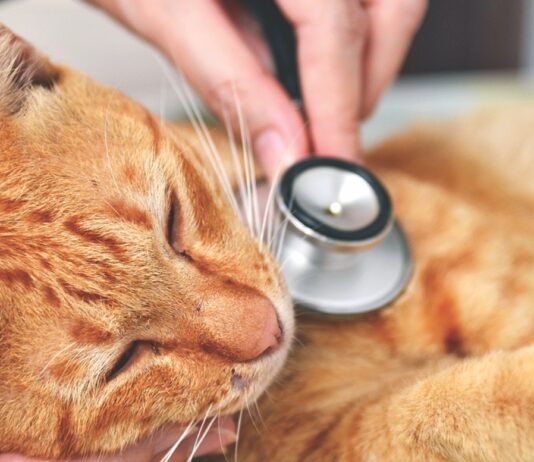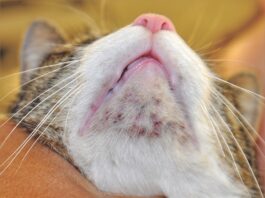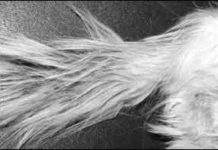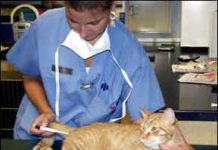Shelter Help Desk Reduces Admissions
When behavior problems seem insurmountable, many owners surrender their pets to shelters. The Nevada Humane Society in Reno lowered admissions by 8 eight percent with one simple change: It created the Animal Help Desk, a free phone service. “We see it as part of our mission to encourage and enable people to do right by their animals by helping them keep their pets in their homes whenever possible,” Executive Director Bonney Brown says in the e-newsletter No-Kill Nation from Maddie’s Fund.
Robo-Tuffy Provides Hands-on Training
Students honing their emergency skills at the Cornell University College of Veterinary Medicine owe gratitude to a special feline named Fluffy, who doesn’t meow and never needs a litter box. Fluffy is a robotic cat equipped with a mechanical pulse and heart, artificial lungs and electronic hardware and software capable of simulating cardiac arrest, lung diseases, shock and other medical conditions. She and a canine version named Jerry are believed to be the first of their kind used in veterinary schools. Think of Fluffy as a high-tech pet version of the popular battery-operated board game Operation, which tests players’ hand-eye coordination and motor skills.
Easing the Discomfort of GI Sufferers
While the cure for inflammatory bowel disease remains elusive, new strides on the nutritional and pharmaceutical fronts are helping affected cats lead healthier lives. The use of novel or hydrolyzed diets coupled with the administration of the synthetic steroid prednisolone seems to offer an effective one-two therapeutic punch for most cats diagnosed with IBD, says Joseph Wakshlag, DVM, Ph.D., Associate Professor of Clinical Nutrition at the Cornell University College of Veterinary Medicine.
Be Ready to Act in a Choking Emergency
Our cats don’t live in a protective bubble, and their feline curiosity can create potential choking hazards. Some cats can start to choke if they gobble large amounts of dry food too quickly or accidentally swallow string. Witnessing your cat in a wide-legged stance, coughing, gasping for breath can be frightening. That’s why it’s vital to know the proper response to keep him safe. “Cats can choke on kibble or toys, but most commonly, they come to the emergency room choking on a foreign object due to chewing on thread or swallowing needles,” says Dan Fletcher, DVM, Ph.D., Assistant Professor of Emergency and Critical Care at the Cornell University College of Veterinary Medicine.
Supracaudal Gland Hyperplasia
In teenagers, the sebaceous glands contribute to the development of acne. In cats, these glands can cause a similar problem at the base of the tail, an accumulation of scale (flakes) and yellow-to-black waxy debris (blackheads) along the dorsal, or top, surface of the tail. Although it can affect any cat who doesn’t groom the tail, the condition was once thought to affect only intact male cats, hence the name stud tail, says dermatologist William H. Miller, Jr., VMD, Medical Director of the Cornell University Hospital for Animals.Medically, the condition is known as supracaudal gland hyperplasia or tail gland hyperplasia. It’s caused by hypersecretion of the glands in the supracaudal organ on the base of the tail.
Broken Bones: All Cats Are at Risk
Despite their typically strong, agile, and resilient bodies, cats are subject to a wide variety of musculoskeletal disorders — diseases and injuries affecting the complex structure of bones, muscles, tendons, and ligaments that give shape to their bodies and enable them to move about. Fortunately, most of these disorders — such as congenital malformations, inflammatory diseases and tumorous growths — are relatively rare in cats. Less rare by comparison are bone fractures that result from traumatic events, such as when a cat is hit by a car, for example, or falls from a tree. A fracture can occur when any physical force applies sudden and excessive pressure on a bone until it snaps at its weakest point. Although fractures occur less frequently in felines than they do in dogs, cats with broken bones are treated once or twice each month at the Cornell University Hospital for Animals (CUHA), according to Ursula Krotscheck, DVM, an assistant professor of clinical sciences at the University’s College of Veterinary Medicine.
Short Takes: October 2012
Two specialists in veterinary emergency and critical care have teamed up to help produce the first evidence-based guidelines for cardiopulmonary resuscitation in cats and dogs. When a preliminary survey showed little consistency in the rate of chest compressions administered by veterinarians during CPR, Daniel J. Fletcher, DVM, Ph.D., at Cornell and Manuel Boller, DVM, MTR, at Penn initiated a plan to develop evidence-based guidelines for CPR for veterinary patients. Although more than 20 percent of human patients who suffer cardiac arrest in the hospital survive to go home, perhaps partially as a result of the variability in compression rate, only 6 percent of dogs and cats do, according to recent veterinary CPR research.
When to Worry About Tail Injuries
A cat’s tail can wave happily, swish angrily and wrap around him contentedly. But when the tail is injured, more may be at stake than the ability to communicate mood. Injuries to the feline tail may be minor, causing a brief spasm of pain or a permanent crook, or they may damage the nerves so severely that bladder and sphincter control are affected temporarily or permanently. Common injuries include fractures, acute trauma that may involve damage to the skin or heavy bleeding, and what are known as avulsion injuries, caused by pulling, says board-certified surgeon James A. Flanders, DVM, Associate Professor at Cornell University’s College of Veterinary Medicine. Tails can also be damaged if they are bitten in a fight with another animal.
A Commitment to Improving Well-being
Imagine veterinarians being able to sterilize feral cats by vaccination instead of surgery. Or to identify the connection between a relatively benign form of feline coronavirus and feline infectious peritonitis, which is nearly always fatal, with the hope of finding ways to diagnose and combat it. Or discover how and why vaccine-associated sarcomas may trigger DNA damage in some cats and how this damage may be used to predict which cases of the sarcomas are amenable to chemotherapy. These are just three of the many scientific studies funded by the Cornell Feline Health Center where, under the guidance of Director Colin Parrish, Ph.D., Professor of Virology, the goal of bettering the health of cats continues to be the focus and commitment, as it has been since the center opened its doors in 1974.
Understand the Risk of Glaucoma
The eye is an amazing, delicate organ. Cells within the eye normally produce a clear fluid (aqueous humor) that serves to nourish and maintain the shape of the eye. When the balance between the production and the drainage of fluid is upset, glaucoma can result. Decreased drainage of fluid causes increased pressure (and pain) within the eye, often resulting in damage to the optic nerve and, consequently, loss of vision. While glaucoma is much less common in cats than in dogs, it still poses the same high risk of blindness if left untreated. In fact, even if diagnosed early on, treatment is not always successful.
Taking Your Cats Temperature
You may wonder: How exactly can I take my cat’s temperature without being bitten or scratched to smithereens? Obviously, you will need to do it carefully, and if possible, with a partner. Additionally, it’s a smart idea to first have a trained staff member at your veterinary hospital demonstrate the technique for you. There may be a time when your cat is recovering from an illness and you’ll be asked by your veterinarian to monitor her temperature, so it’s a useful skill to aquire.
Taking Your Cat’s Temperature
You may wonder: How exactly can I take my cat’s temperature without being bitten or scratched to smithereens? Obviously, you will need to do it carefully, and if possible, with a partner. Additionally, it’s a smart idea to first have a trained staff member at your veterinary hospital demonstrate the technique for you. There may be a time when your cat is recovering from an illness and you’ll be asked by your veterinarian to monitor her temperature, so it’s a useful skill to aquire.
















